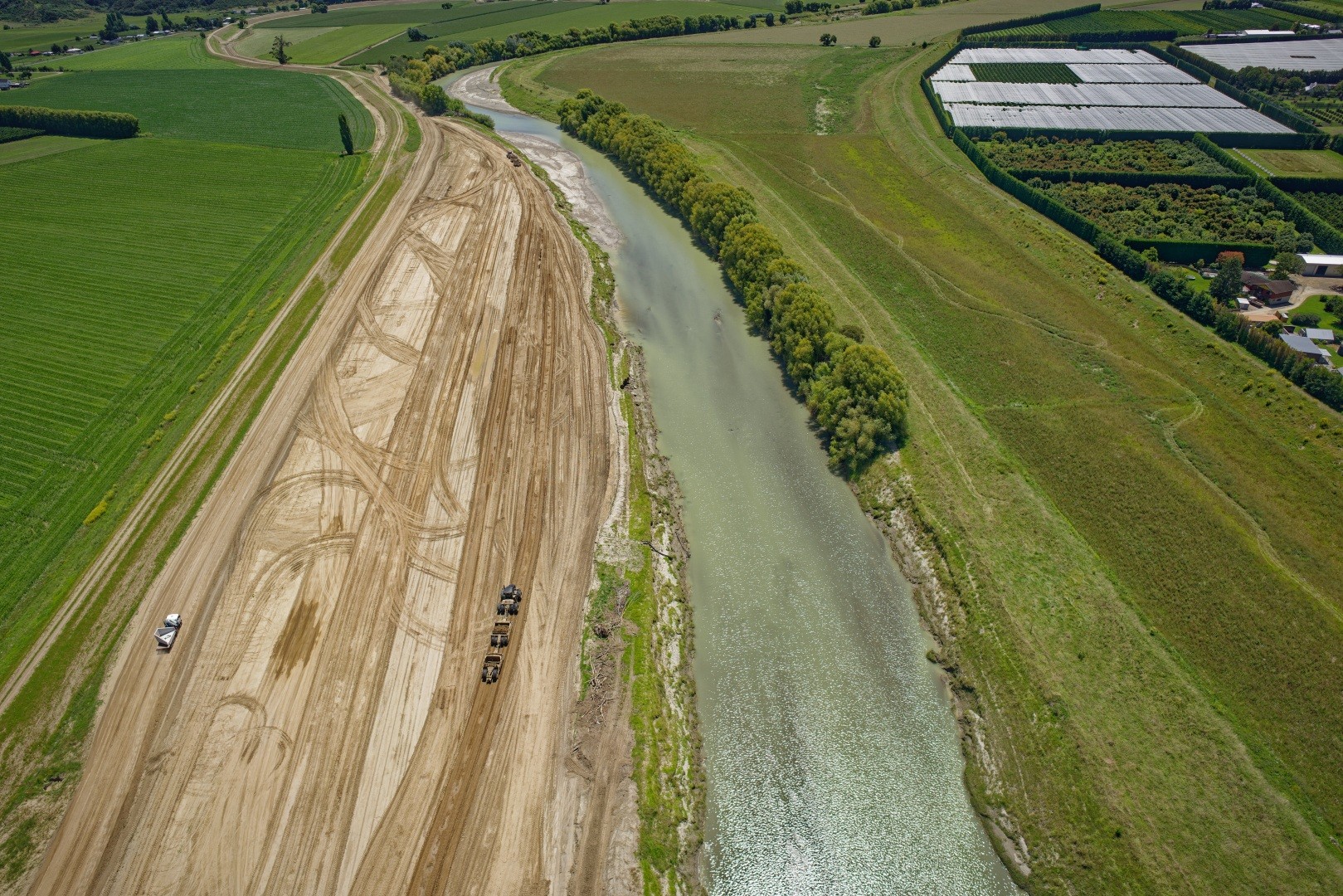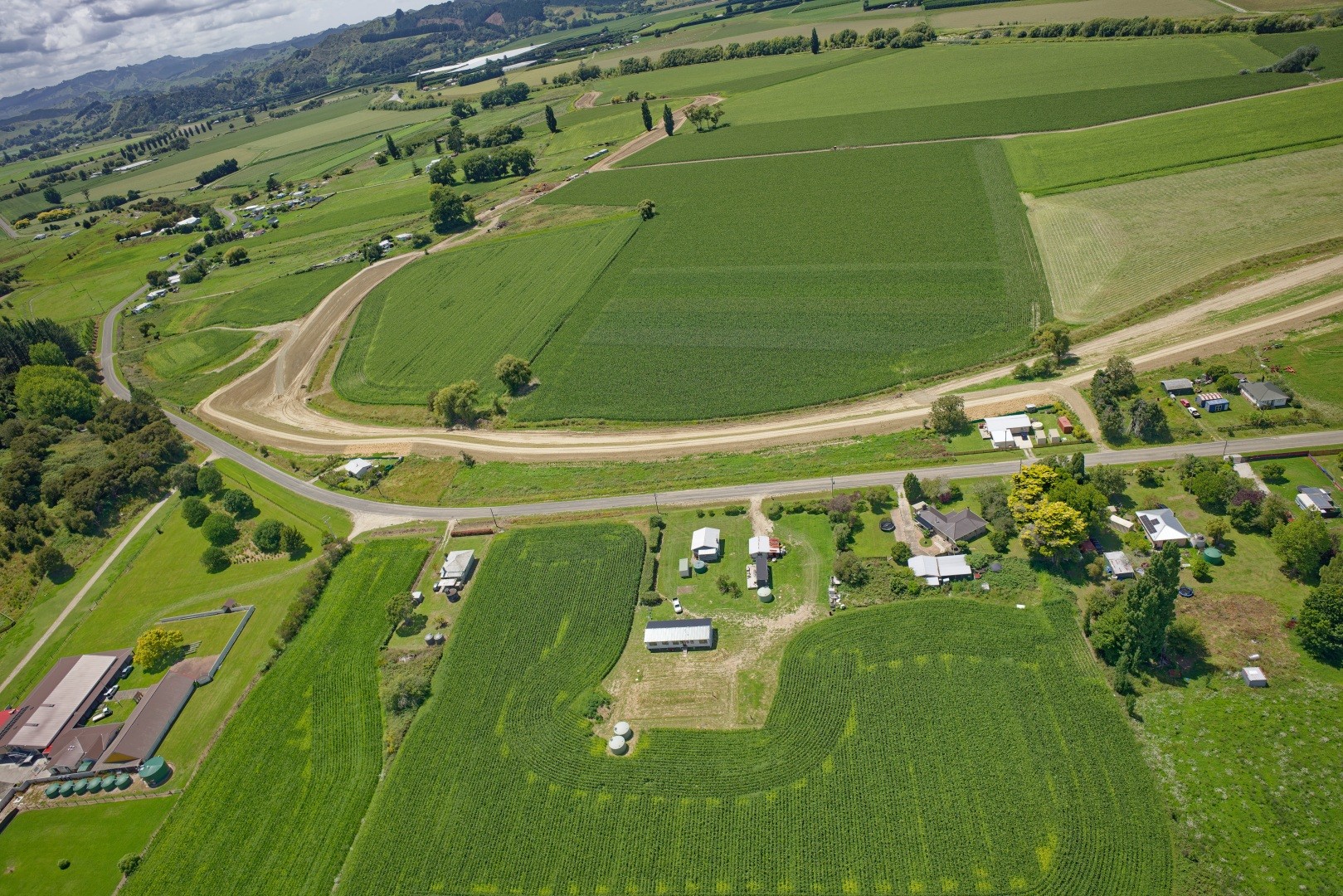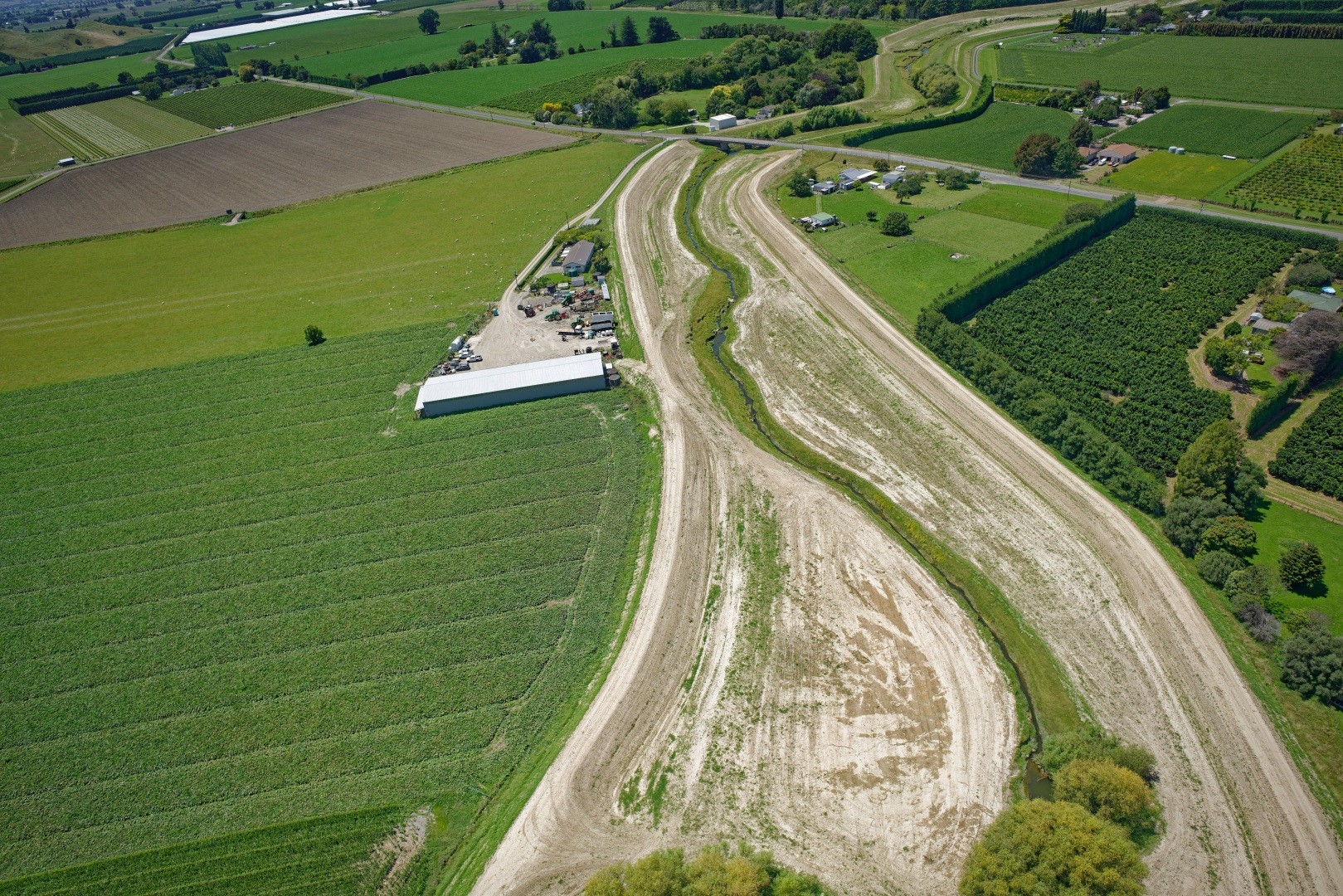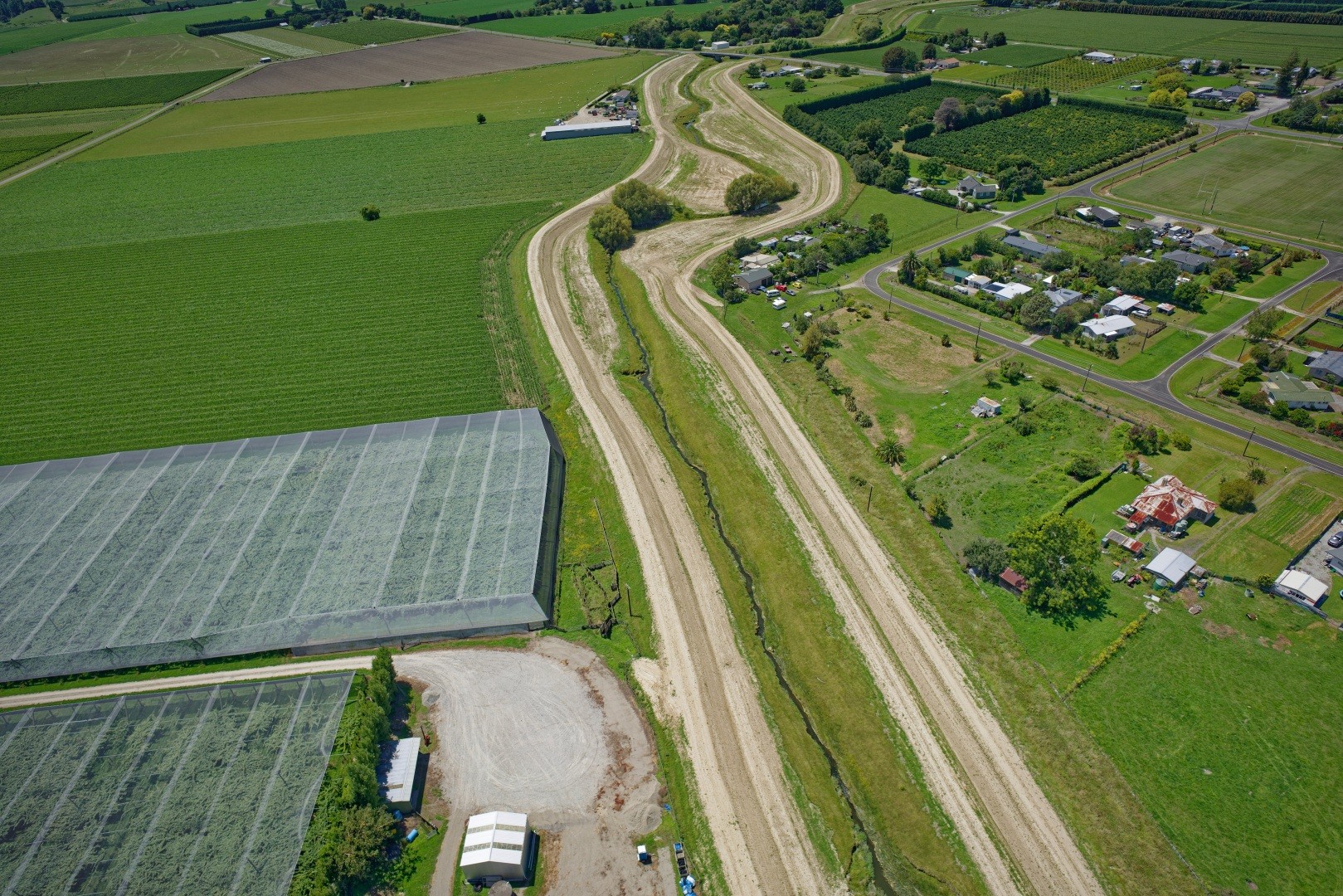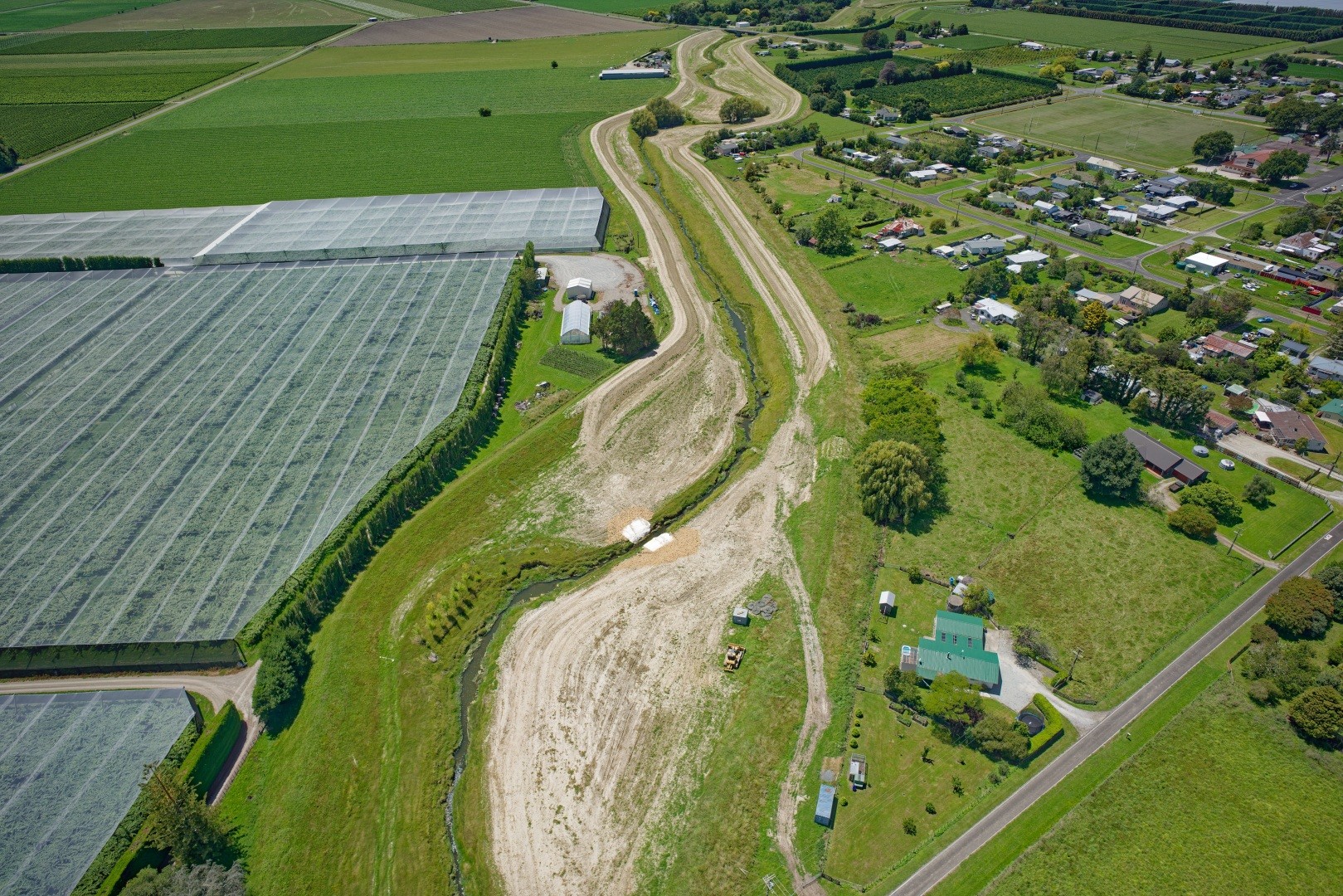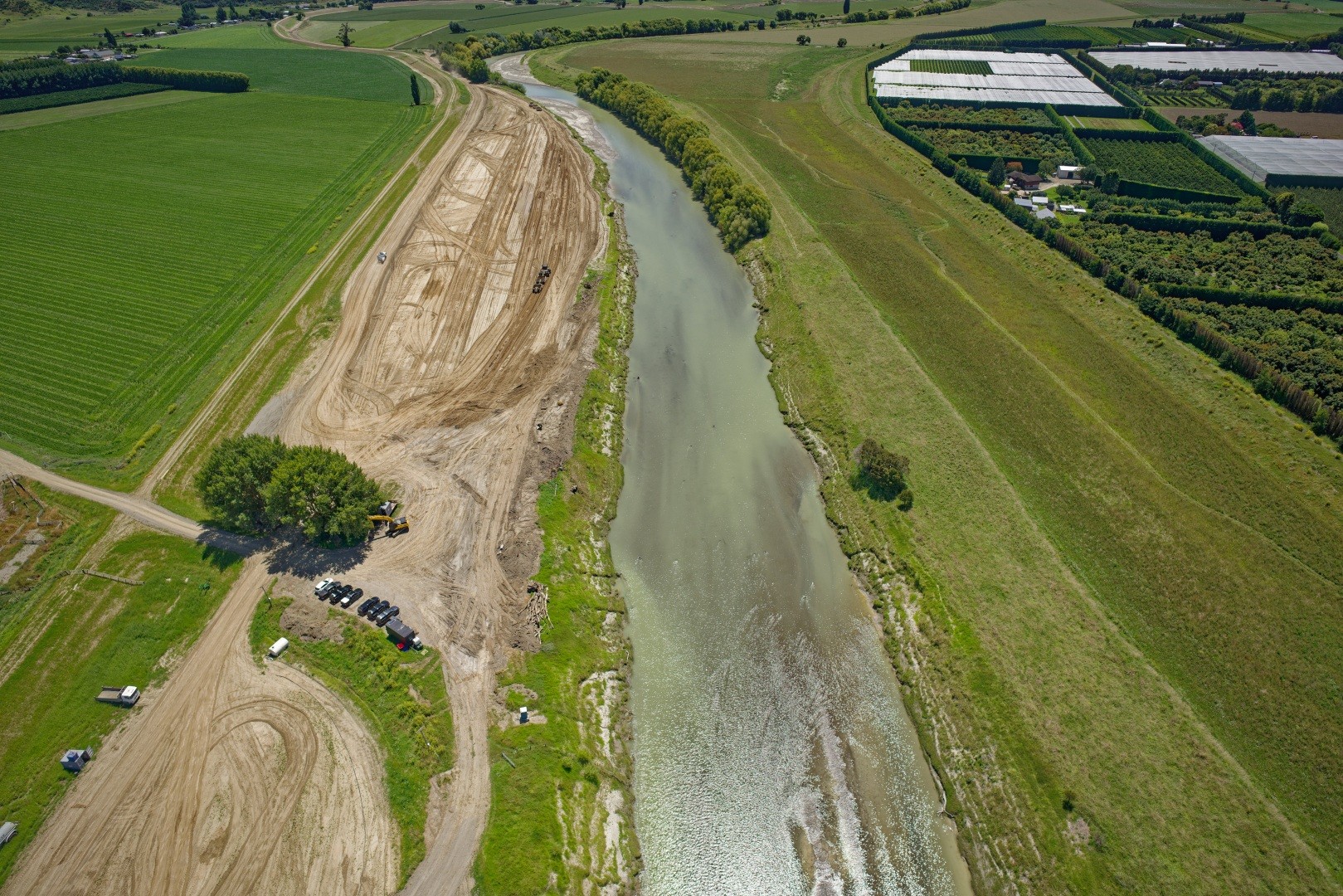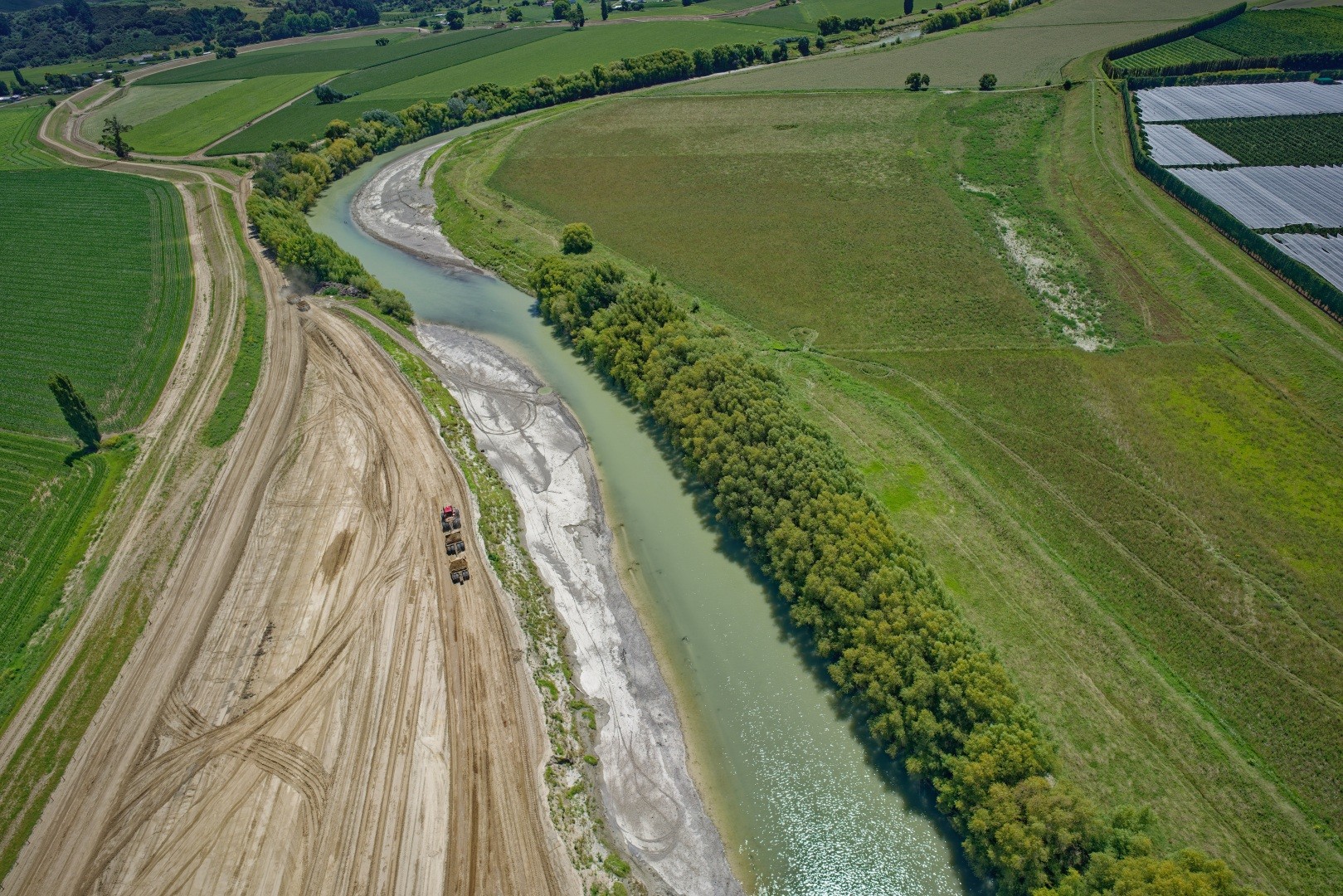In 2020 the government declared a climate change emergency, recognising the need for us all to prepare for the impacts of a warming climate, with more erosion, more flash floods and wildfires in our region.
Climate change is the most significant long-term issue facing our region. We’re expecting sea level rise, coastal erosion and floods affecting homes and recreation.
We need flood protection to keep our people and community safe from our rivers breaking their banks in heavy rains. We also need to ensure that our important horticulture, viticulture and farming assets are protected from the effects of climate change.
We want to accelerate the delivery of our Waipaoa Flood Control Climate Change Resilience project, giving greater protection our community needs against floods, safeguarding both economic development and wellbeing.
The project aim is to increase the level of flood protection of the Waipaoa Flood Control Scheme (WFCS) up to a 100-year return period accounting for climate change effects out to the year 2090.
The WFCS comprises approximately 64km of stopbanks along the Waipaoa River, together with other river control structures and protection works (pipes, floodgates etc), built between 1953 and 1967 to provide flood protection to the Poverty Bay floodplains and Gisborne city.
Resource consent for stopbank improvement work was granted on 26 October 2018. Stopbank construction work first started in February 2019.
The original Waipaoa Flood Control Scheme was designed in 1949 and constructed between 1953 and 1969. It's considered to be one of Council’s most valuable assets and protects some 10,000 hectares of fertile floodplain land. Construction work to improve the scheme started in February 2019 and involves upgrading approximately 64km of stopbanks along the Waipaoa River by 2030/31.
Stopbank work
As well as making the stopbanks higher, construction work will widen the stopbank profile from the current 1.5m top crest to a 4m wide top crest. Stopbank heights are being increased by about 1-2 metres in some places.
Experts have told us higher and wider stopbanks are needed to provide the full level of protection we need.

Budget, where we're at
2024-2027 Three Year Plan budget $10.1m
External government funding $20.46m approved Dec 2023
Started: 2015/16
Revised completion date: 2027
Overall project: Based on length of stopbank fully upgraded, we're just over 75% through the project.
Approx 52km of stopbank raising/widening has been completed to date.
Stopbank upgrade construction works are currently near Patutahi and Waituhi areas.
Timetable
Planned stopbank upgrade work
In August 2020 we were awarded $7.5m of external funding support by Kanoa to accelerate the delivery phase of the project. This external funding reduces the financial contribution that the community has to pay towards the project. In December 2023 central government approved $20.46m.
| Date planned | Stopbank location |
|---|---|
| Oct 2025 – Dec 2025 | Upgrade remaining Waituhi area up to 678 Lavenham Road - 1.5km |
| Oct 2025 - June 2026 | Upgrade between 1053 Lavenham Road and 1913 Matawai Road - 6.5km |
| June 2027 | Waipaoa Flood Control Scheme fully upgraded and operational on both sides |
Total project cost estimate - $35-37 million (approx)
Stopbank upgrades

Key to the map
1. Te Karaka Flood Resilience Project - hydraulic modelling, detailed design, consenting, implementation
2. Wi Pere to 1913 Matawai Road - 6km of stopbanks to be upgraded 2025 - 28
3. Wi Pere Trust raising 2km of stopbanks 2025/26
4. Wi Pere Trust mitigation measures - completed December 2022
5. Renner Road to 678 Lavenham Road (old chicken farm) 5.5km of stopbanks – expected to be completed May 2025
6. Whakaahu Stream, both sides of river upstream of Lavenham Bridge 3km of stopbanks – expected to be completed by January 2025
7. Matawhero Bridge to Lavenham Rd Bridge, north side Whakaahu Stream, 10km of stopbanks completed May 2024
8. Opou Road to Matawhero Bridge (SH2) 1.5km of stopbanks completed November 2023
9. Whatatuna Stream to Opou Road 3.2km of stopbanks completed January 2023
10. Railway Bridge to Te Arai SH2 Bridge 5.5km of stopbanks completed December 2022
11. Railway Bridge to ocean completed January 2024
12. Kaitaratahi Hill to Whitmore Road 3km of stopbanks completed April 2022
13. Mahunga Stream floodgate construction completed January 2024
14. Caesar Road to Whitmore Road 1km and 1.8km of stopbanks completed January 2024
15. Ford Road to Ferry/Ingram Roads 4km of stopbanks completed October 2019
16. Bushmere Road to Ferry/Ingram Roads 5.5km of stopbanks completed February 2022
17. Matawhero Bridge to 359 Bushmere Road 3km of stopbanks completed June 2021
18. Willows/Dunstan Roads intersection to Matawhero Bridge 4.1km of stopbanks – completed March 2021
19. Railway Bridge to Willows/Dunstan roads 2km of stopbanks completed February 2020
20. River mouth to Dunstan Road 2km of stopbanks completed December 2020
| Date completed | Stopbank location - km completed |
|---|---|
| April 2025 | Whakaahu Stream confluence up to Waituhi - 6km |
| April 2025 | Both sides of river upstream of Lavenham Bridge - 3km |
| May 2024 | Matawhero Bridge to Lavenham Road Bridge, including north side of Whakaahu Stream - 10km |
| November 2023 | Between Opou Road to Whatatuna Floodgate fully upgraded - 2.2km |
| February 2023 | Downstream from Opou Road to Whatatuna Floodgate fully upgraded - 2.2km |
| December 2022 | Between Waipaoa River mouth and Te Arai Stream (western side) except remaining 200m - 8.5km |
| April 2022 | Between Whitmore Road and Kaitaratahi Hill – 3km |
| March 2022 | Between Ford and Caesar Roads – 1km |
| February 2022 | Upstream of Matawhero SH2 bridge along eastern side to Ferry Road – 4.5km |
| May 2021 | Upstream of Matawhero SH2 bridge - 3km |
| March 2021 | Railway Bridge and Matawhero SH2 Bridge - 4km |
| December 2020 | Waipaoa River Mouth and Railway Bridge – 2km |
| February 2020 | Railway Bridge near Waipaoa river mouth – 2km |
| December 2019 | Between Bruce and Ferry roads - 2km |
| February 2019 | Between Ford and Bruce roads - 2.1km |
FAQs for property owners along the Waipaoa River stopbank upgrades
The Waipaoa flood control climate change resilience project will:
- Upgrade the existing flood control scheme to a 100-year design event including for climate change factors out to the year 2090.
- Improve resilience against flood events.
- Protect and improve council’s most valuable asset.
- Continue to protect the 10,000 hectares of fertile floodplain land. This scheme protects and supports the high yield horticultural uses.
Earth fill material is required for the scheme upgrade. This will be sourced from a number of borrow sites located within the section that's being worked on each year. This is typically the flat floodable berm areas located between the stopbank and the river.
There'll be increased earthworks at these sites as borrow material is excavated and moved to the section of the stopbank that's being upgraded.
All borrow sites will be reinstated when construction is completed.
You may notice truck movements and noise from earthworks during construction.
You may also notice increased activity on sections of the scheme not under construction, as investigation and planning for subsequent construction phases is undertaken.
As the upgrades are completed, the stopbank will be re-sown with grass.
The upgrade work will generally be done during summer months when river flows are low and when there's favourable ground conditions.
Because the upgrade will affect parts of the flood control scheme as they're worked on, they'll be managed in limited sections at a time, to manage any potential flood risk.
If contractors require access to your property, we'll contact you.
Where access is required to part of your property, a clearly defined area of entry will be agreed with you prior to any entry.
The area required for access will be clearly shown on a plan and the term of access required clearly set out.
If you have a licence for any areas of the existing scheme which are being upgraded, you'll be contacted.
The timing of construction on any licenced area will be determined well in advance, so that any crop can be harvested and future plans made by the licensee.
There may be a reduction in the licence fee for any loss of use during the works. Once construction is completed, any changes to the licence will be discussed and a new license issued.
There's no cost to the property owner or occupier for the work.
Those who wish to take advantage of reinstatement works and upgrade infrastructure such as fences may be able to pay the difference, assessed on a case-by-case basis.
Any part of your property damaged by entry will be reinstated as close to its original condition as possible by the contractor on completion of the works.
Where the work affects an existing boundary fence, a temporary fence will be provided by the contractor to ensure any stock is kept secure.
Once construction's finished, the fence will be fully reinstated by the contractor.
We'll notify landowners who have a water take that crosses the stopbank about the timing of the work.
The work will be managed to minimise disruption to the water supply during construction.
The contractor is required to manage dust and noise during the physical work.
Once construction's completed, the stopbank will be re-sown with grass.
Noise will be limited to earthworks machinery during construction.
Borrow sites for fill material to build the stopbanks will be selected to have the least environmental impact on river ecology, fish passage and spawning.
Cultural and archaeological discovery protocols have also been set up as part of the resource consent process in advance of construction occurring.
Work times will typically be:
- Monday - Friday 6am-6pm
- Saturday - 7am-1pm
There will be no work on public holidays.
An 8km long cycle trail was completed in June 2022 between the Waipaoa River mouth and the Matawhero SH2 Bridge on the eastern side of the Waipaoa River.
The resource consent for the cycle trail only covered this specific area.
There's currently no approved resource consent for a cycle trail along any other stopbank.
Resource consent for the construction of any additional cycle trails along the Waipaoa stopbanks will be applied for on a case-by-case basis for specific sections as they are required.
Council will consult with landowners and stakeholders as these cycle trail options are investigated and considered.
